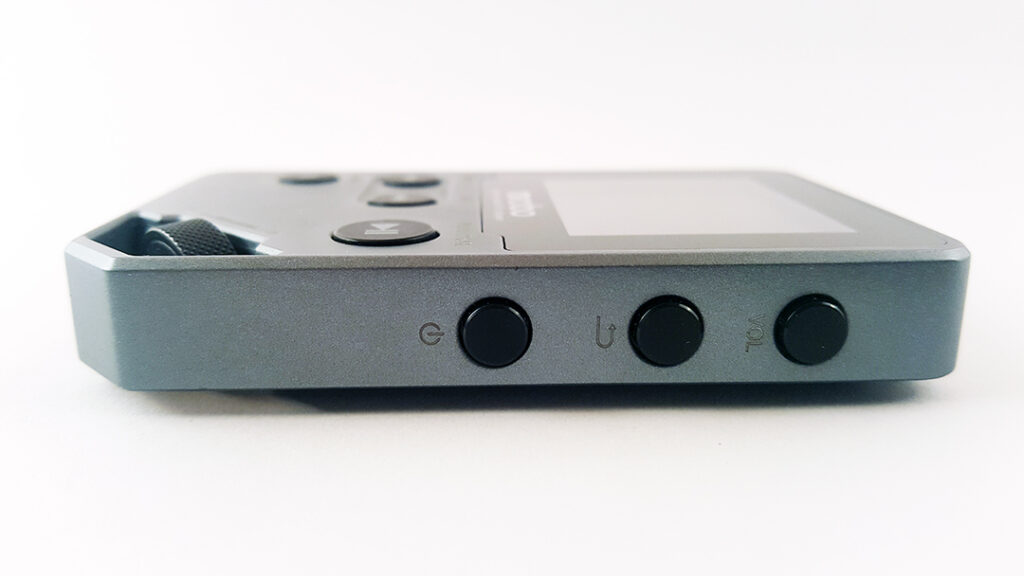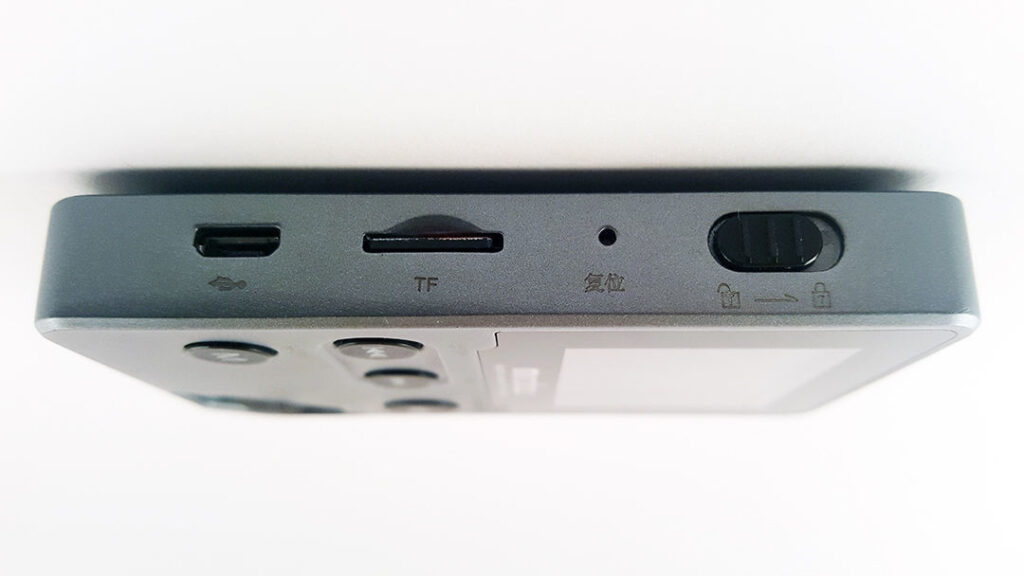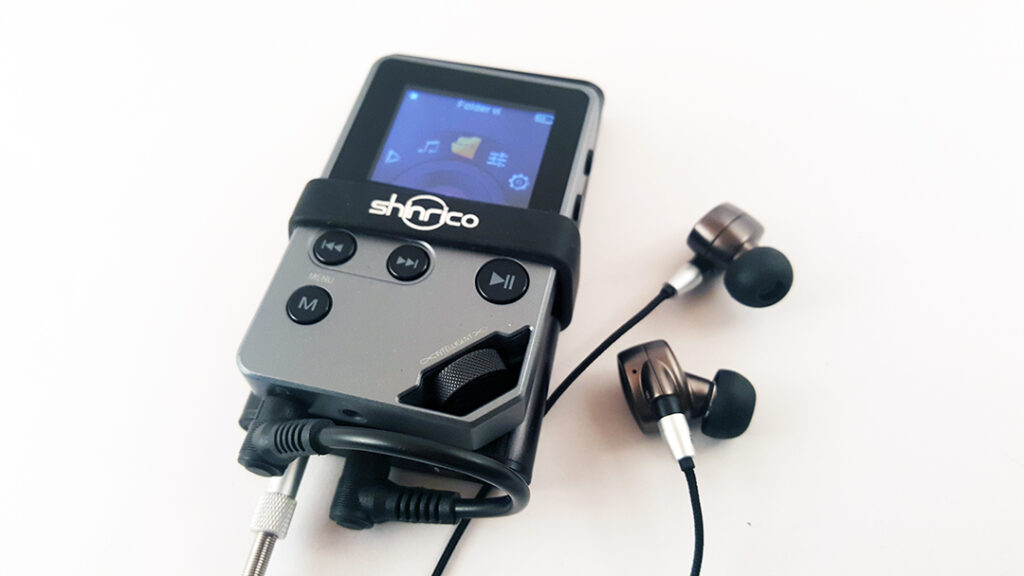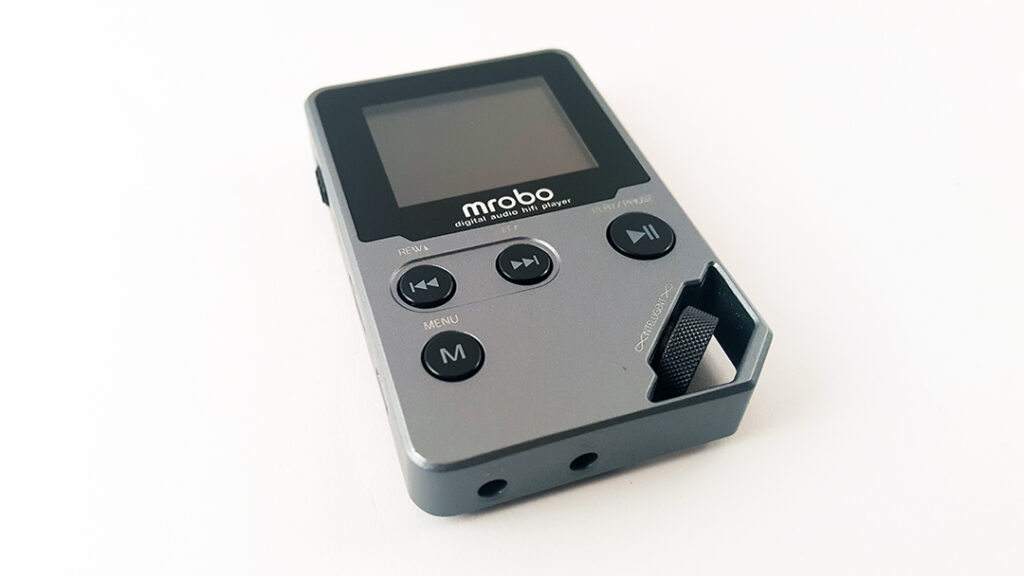In a continuation of the recent trend where there’s been a flurry of budget, Asian DAP releases there is another new one on the market in the form of the Mrobo C5. Mrobo is a company that was previously unknown to me and so far I’ve been able to find little information except that they appear to have started out making portable voice recorders. Today I’ll be taking a look at the Mrobo C5 Digital Audio Player that boasts a good sound and battery life. The C5 currently retails for around $32. Read on to see if it delivers and deserves to be part of your portable rig.
Disclaimer
This product was sent to me for the purpose of an honest review. I’m not affiliated with the company and all opinions and observations here are my own, based on my experience with the product.
Specification
- Screen: 1.8inch 128 * 16
- Signal to noise ratio:> = 96dB
- Play time: about 60 hours
- Standing time: about 300 hours
- Audio formats: MP3.WMA, WAV, APE, FLAC, ACC, OGG
- Size : 86*54*14mm
- Weight: 145g
Supported formats
- WMA: 96 KHz/24bit
- FLAC: 192 kHz/24bit
- OGG: 48 kHz/16bit
- ACC: 48 KHz/16Bit
- APE: 192 kHz/24bit
- MP3: 24 KHz/16bit
- ALAC: 192 KHz/24bit
- WAV: 192 kHz/64bit
- AIFF: 48 kHz/16bit
Packaging and accessories
The C5 comes in a simple retail box that for some reason doesn’t have any images of the great looking player on it at all. Inside we find an accessory box, underneath which is the player itself.
Accessories include a USB charge/transfer cable, complimentary earbuds, warranty card and a user manual. The included earbuds look great at first but it turns out they’re probably the worst I have ever used. They’re made of a cheap feeling plastic with very sharp edges and they sound awful.

Build
Upon removing the player from the box, first impressions are very positive. It feels solid, is very heavy and doesn’t have any loose buttons or rattles. On the left side are (from top to bottom) a button lock, reset button, micro SD slot and USB port.
The right side contains (from top to bottom): Volume Up, Volume Down and the A/B playback button. The A/B button basically lets you sample a section of a file and loop it, handy for language learning but not much else.
On the front are the rest of the goodies. At the top is the 1.8 inch TFT screen with a resolution of 128×160. Then there’s the Back, Forward, Play/Pause and Menu buttons. Finally, there’s a rotary control wheel in the bottom right corner. The buttons are plastic but have a nice, tactile click and aren’t loose. The rotary wheel is solid metal and moves in incremented bumps with audible clicks.
At the bottom are (from left to right): Headphone output and microphone input. Overall the build quality feels high quality and very robust. Fantastic.

User Interface and operation
To turn the player on you simply hold the Play button for 2 seconds after which you’ll be greeted with a Welcome screen followed by the Now Playing screen. Boot time is very fast, about 2-3 seconds. The now playing screen, unfortunately, does not display album art but includes (from top to bottom):
- Track title
- Artist
- Play/repeat mode
- Album
- Track time (current position)
- Track number/Total tracks
- Track length
- Progress bar
Above the progress bar is a fake peak meter that moves when music is playing but does not display any real measurements (strangely though this DOES work properly when recording). From this screen, you can skip tracks with either the Previous and Forward buttons or the rotary wheel. Pressing the Menu button takes you to the Now Playing options which are:
- Play mode
- Equaliser
- Variable speed playback
*The variable speed playback function does not seem to work as far as I can tell.
What’s unfortunate here is that from the Now Playing screen there’s no way to go back to the current directory folder apart from the long method which goes like this: Long press the Menu button to go back to the root level menu > Choose “Folder View” > navigate to the Folder View of the current playing song. So for example, if you’re listening to track 7 of an album and you want to go back to track 2 you either need to use the Previous button (5 presses with a short pause in between) or use the rotary wheel and include the short pauses again. Very inconvenient. That’s really my only gripe with navigation as everything else works as you’d expect it to.
A long press on the Menu button takes you to the top level menu. This is a feature I appreciate and found missing on the NiNTAUS X10. Here are the root menu options and sub-categories (*I’ve only gone to the third level because, well….I just don’t have the time or space to do it all):
|
Set (settings)
|
Save position
|
Flash
TF |
|
Sleep timer
|
Off
Set sleep timer | |
|
Display settings
|
Backlight timer
Screensaver | |
|
Date and time
|
Time settings
Date settings | |
|
Language
| ||
|
Tools
|
Alarm
Password set Stopwatch | |
|
Information
|
Disk space
TF Card space | |
|
Format device
| ||
|
Factory settings
| ||
|
Recordings
|
Start voice recording
| |
|
Recordings library
| ||
|
Record settings
|
Record format
Set rec bitrate Record from Set recording scene Tarck AVR mode Monitor switch Record subsection Auto record | |
|
Music
|
All songs
Artists Albums Genres | |
|
Video
| ||
|
Pictures
| ||
|
Ebook
| ||
|
Foldier view
|
I find it strange that the device can view pictures but does not include album art on the Now Playing screen…
The Equalizer has 8 settings which are:
- Off
- Rock
- Funk
- Hip-Hop
- Jazz
- Classical
- Techno
- Custom
The UI is fast and responsive. When you press a button something happens immediately, unlike some more expensive players (looking at you again FiiO X1ii). Everything is set out quite well and is easy to find except for one thing which took me a good 20 minutes to figure out. To switch the Folder View from onboard memory to the micro SD card you need to go to Settings > Save position. This was implemented much better on the Benjie K9 where the top level of the Folder View enabled you to choose between the two. Moving around in the menus can be done either with the Previous/Forward buttons or rotary wheel, the latter is great for scrolling through long lists.
The lock function disables all buttons including the volume. It would be nice to be able to choose to leave the volume buttons unlocked but with a player at such a low cost as this compromises have to be made so you can’t expect too much.
In the Recording options you can really see Mrobo’s background and heritage in voice recording but personally, for a device that’s marketed primarily as a music player, I’d prefer they left the recording functions out altogether and focus on the music.
Marketing pictures claim that the player supports 24 bit and DSD playback but both of those are unsupported and as far as I know Mrobo does not have any plans to release firmware updates to rectify this.

Battery life
I’ll keep this part brief. Battery life is exceptional. After a full charge I played flac files on repeat at a moderate volume and it kept going for 2 days nonstop. The battery gave out sometime while I was at work but I estimate it was at somewhere between 40-50 hours. Impressive.

Sound
This was the most disappointing area of the C5 for me. On the default sound setting (EQ off) music lacks body and has drastically reduced bass. The sound is resolving, detailed and clear but it’s just too far from transparent and doesn’t sound right. This can be improved with some heavy use of the custom EQ but that shouldn’t be necessary to achieve a reference sound. Personally, I just left it on the Rock preset which to my ears sounded a lot closer to how it should. Most of the other niggles could probably be overlooked by Head-Fiers but at the end of the day, we’re here for quality music reproduction and the C5 falls short in this department. It’s immediately apparent and your first thought will likely be something like “What happened to the bass?”
To summarize
The good
- Clear display
- Fast boot time
- Responsive UI
- Battery
- Build quality
- Clear, resolving sound
The bad
- Does not support 24 bit or DSD files.
- Does not display album art
- Default EQ setting sucks the body and low end out of the sound

Conclusion
The C5 looked so promising at the start. The moment you pick it up it feels much more premium than you’d expect given its low price. Quality materials in a very nicely machined, solid metal case with crisp, tactile buttons and a decent screen. When you tell the UI to jump it immediately asks “How high?” with enthusiasm. Then the holes start to show. No 24 bit or DSD playback. A default setting that drastically alters the sound. No album art. Some of these things could possibly be corrected with a firmware update but the impression I got from talking to Mrobo was that they do not plan to release any future versions of the software. Quite a shame really, this could have been a winner but in the end, I would not recommend it.


